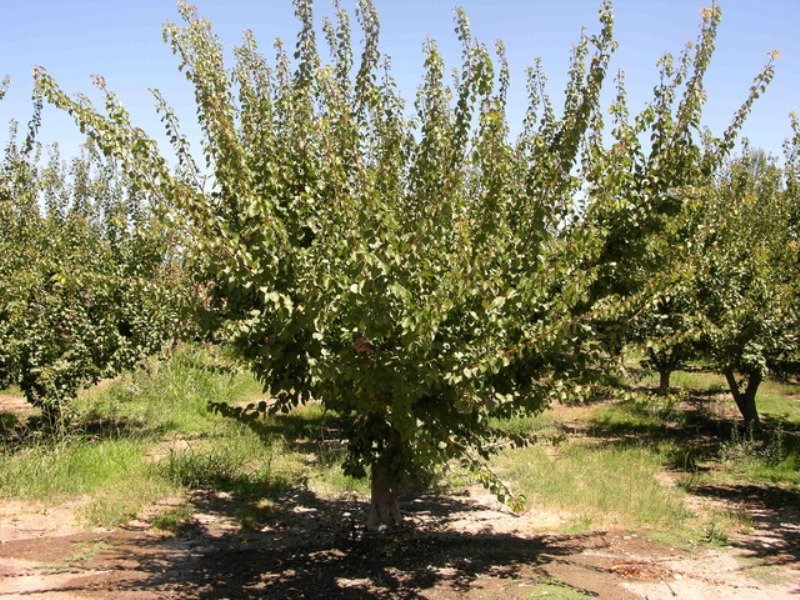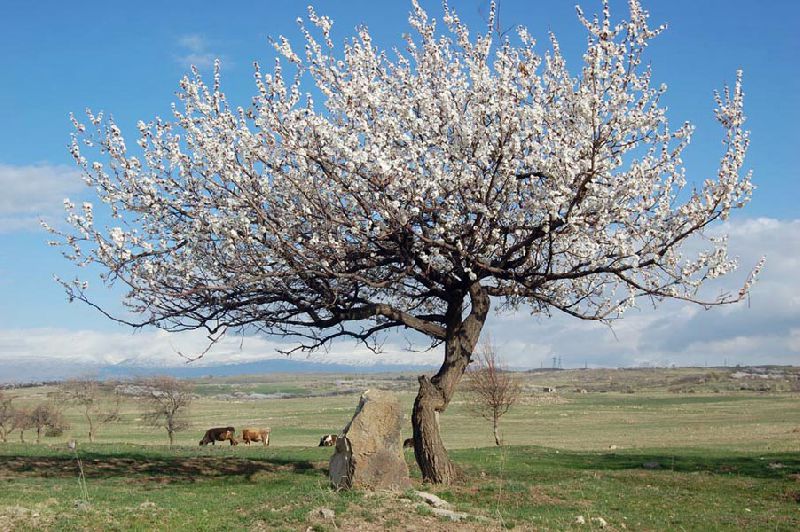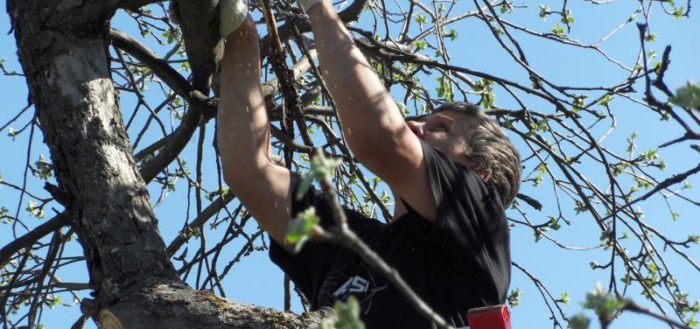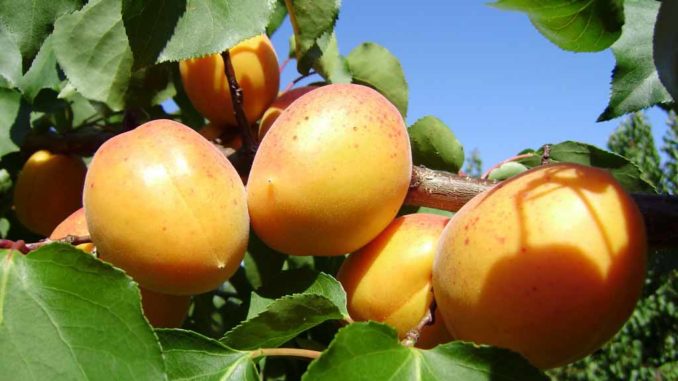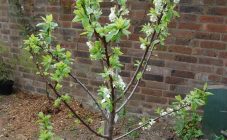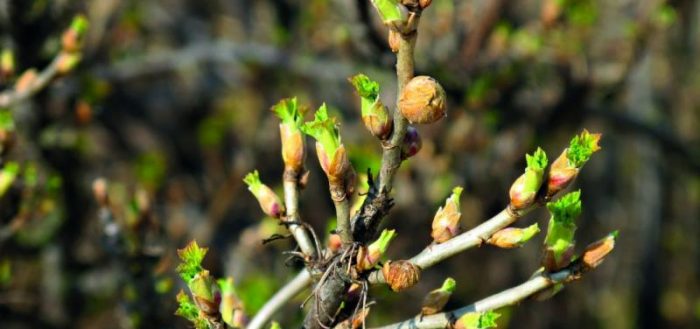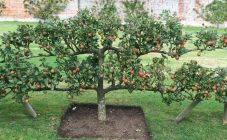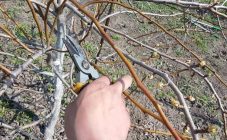Content:
The first crop from an apricot tree can only be obtained if the plant is properly cared for from the very moment of planting. Carrying out trimming procedures is considered a mandatory agricultural technique when shaping the crown. However, one purchase of garden tools is not enough - you need to have certain information about the correct performance of work, how to shape an apricot tree, and also know how pinching differs from pinching and chasing. The cut on the fruiting branch must be done carefully. If you neglect the established timing and quality of pruning, this can lead to the death of the apricot tree.
The need for trimming work
Taking into account the specific features of the apricot tree, there are a number of reasons that necessitate pruning work:
- Maintaining the crown of the apricot tree by self-shaping. Failure to carry out this procedure will lead to excessive overgrowth of branches.
- Uncut apricot branches will bear fruit abundantly at first, but the crown layer will become excessively thickened. Despite this, the branches located in the inner part of the crown tier will gradually begin to crumble, break off and fall off.
- If you do not cut the apricot tree, then the number of fruit-bearing buds laid will be significantly reduced, and the remaining fruits will be smaller in size.
- Failure to regulate the amount of expected harvest during the first few years will lead to branch breakage under the weight of the ripe fruit.
- Lack of pruning will stop the growth of young shoots.
If the formation of the apricot crown is carried out in a timely manner, this will allow for decades every season to harvest a good harvest of large and juicy fruits. In addition, the result of regular trimming will be a longer planting life.
Pruning time
Apricot wood needs complex pruning, which implies carrying out this procedure in the summer season and autumn, as well as when late spring comes.
Already in the first year, in the early spring period, apricot formation is carried out, aimed at regulating the number of ovaries and improving the quality of future fruits.
In the fall, sanitary pruning is carried out, with the help of which the planting is prepared for the winter season, as well as revitalizing it. This procedure involves removing all unhealthy, dry and deformed branches.
Summer pruning is aimed at rejuvenating the tree, as well as increasing the number of new growths. Such a procedure must be carried out once every three years.
Spring pruning
Detailed diagram of pruning apricot in spring:
- For the first year, the stem of a newly planted tree without branches is shortened by almost one meter above the ground. If the side shoots have already sprouted, two opposite ones are selected from them. The rest are cut off so that no stumps remain. Selected shoots are shortened by half. The stem over these branches is shortened by two tens of centimeters.
- For the second year, a few more main branches are selected. Their arrangement should be even, but should be at least 40 centimeters relative to each other. When pruning the branches of the lower tier, the varietal nuances of the tree are taken into account when the apricot is formed by the bush: for the strong-growing it is half of the entire length, for the weak-growing one - one third. The result of shortening the second tier should be a decrease in the length of the branches by 10 centimeters, in comparison with the lower row. The length of the shortening of the main stem above the upper lateral shoots is about half a meter.
- For the third year, the laying of the upper tier of the main branches is carried out, with a focus on the laying technology in the previous season. However, the priority of the rows is required: the lower tier consists of the most powerful and long shoots, the subsequent ones have branches with a length of 10 centimeters shorter than the previous tier. The leading conductor branch is cut over the third row.
- For the fourth year - trimming is reduced to sanitary cleaning of the tree from deformed, broken and thickening branches. Thus, the tree is processed over the next three years. At the beginning of fruiting, a reduction in the number of branches will have a negative effect on the quality of fruit setting.
- For the sixth year - pruning work is aimed at increasing the number of fruits. Each main branch should have three shoots at the ends, the length of which is shortened by a third. A replacement is created between the branches by cutting off a powerful shoot at a height of 10 centimeters from the base. It is also necessary to carry out sanitary pruning of the crown by removing the branches that thicken the crown part and block the access of sunlight to the lower row.
Summer pruning apricot
Summer pruning of an apricot tree is carried out in early June and implies compliance with a number of recommendations:
- only well-developed thirty-centimeter annual shoots are shortened;
- weakened branches when pruning an apricot in summer must be formed by cutting off one third of its length;
- trimming should begin at the end of May - the remaining shoots are removed throughout the summer;
- two weeks after the first pruning of the apricot was carried out, select new branches with abundant offspring of ovaries, which gives young shoots;
- when carrying out summer pruning, one should focus on creating the layered structure of an apricot tree, as well as giving the crown the necessary direction;
- the frequency of such a procedure should not exceed once every three years.
Pruning apricot in autumn
Autumn pruning, carried out from a young age of apricot planting, is as follows:
- For the first year, the crown part is formed with cutting off the whip by one quarter of the length. On a young planting, there should be two main branches, the distance between which is 27 centimeters. All other shoots are cut off.
- In the second year, two young branches are cut according to a similar pattern, observing the distance between them about half a meter.
- For the third and subsequent years - pruning is carried out using a similar technology, but with an increase in the interval by 10 centimeters. Shoots on the central branch are shortened by half the length if it exceeds 60 centimeters. You do not need to trim short shoots.
Experienced gardening tips
The list of recommendations on how to trim an apricot correctly in different years includes the following rules followed by experienced gardeners:
- before cutting the apricot in the first year, it is necessary to sterilize all working tools so as not to introduce infectious contamination through the resulting open cut;
- autumn pruning in all subsequent years, except for the first, should be done no earlier than mid-October;
- pruning at the end of the year in any year except the first can be carried out only for mid-early and early-ripening varieties of apricot;
- trees cultivated in this way annually at the beginning of June, by the middle of August are distinguished by a significant increase;
- the juice that is released on the cut turns into a thin film that protects the plant from insect pests in all years except the first;
- in spring, annual pruning is best done in early April;
- rejuvenation of the apricot tree should be carried out every three years.
List of trimming errors
Even professional gardeners sometimes admit inaccuracies in the execution of trimming work, because of this, the further growth and development of the apricot tree is carried out with the presence of defects. Studying a number of mistakes most often made by other gardeners will help you avoid getting negative results in your own backyard:
- It is unacceptable to use a blunt instrument that can deform the bark or leave other damage that could cause the plant to rot. Every working piece of garden tools must be carefully prepared and sharpened.
- Neglecting the established timing of pruning procedures will have a negative impact on the plant's immunity, which will take a long time to recover;
- The main branches are cut in a ring, because when the cut is placed close to the leading stem, a hollow is formed, which can cause the apricot tree to die;
- Ignoring the prioritization of tier rows will lead to a noticeable decrease in fruit yield;
- If the height of the lower tier of the branches is too high, the formation of fruits will be carried out at a height of two meters, which will make the harvesting process difficult.
How to care after pruning
Upon completion of the trimming work, mandatory treatment of wounds is carried out in order to prevent infection from entering the plant. The most suitable material for this is garden putty, which can prevent sap from flowing out.
For faster recovery of the seedling and acceleration of the growth process, it is necessary to provide such a level of soil moisture in order to prevent the root system from drying out.
In the area of the trunk circle, regular cleaning of weeds should be carried out, as well as loosening of the soil - in this way the root system can receive the required amount of oxygen.
Young shoots of the apricot tree grow in a very short time. This leads to excessive thickening of the crown, which negatively affects the quantitative indicator of yield. Timely pruning, which can only be carried out if there is knowledge of how to form an apricot correctly, helps to extend the life of the plant and improve the quality of the apricot harvest.
